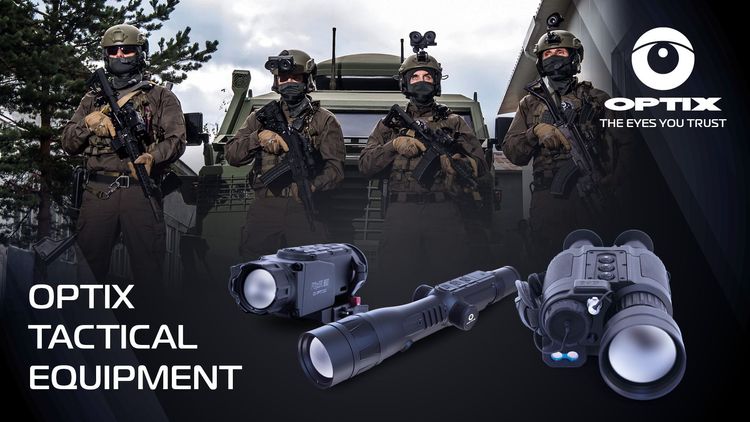CrossFit, bodybuilding, functional fitness, Milfit, hybrid training, Conjugate Method, and now Operative Athletics. Who can keep track? In this article, I will explain what Operative Athletics entails and why it's not only beneficial for emergency responders to train in this system but also for anyone who wants to rely on their physical performance in challenging situations.
Let's start with a definition of terms:
"Athletics" refers to the physical ability to demonstrate endurance, strength, speed, flexibility, coordination, and other physical attributes, often in connection with sports activities or competitions. It encompasses training and developing these skills to improve the body's performance and efficiency.
"Operative" refers to actions, procedures, or activities directly related to the practical implementation of plans, strategies, or guidelines. In a military context, "operative" can refer to missions and direct on-site applications. The addition of "operative" now modifies the term "athletics," indicating that it explicitly no longer revolves around training for competitions or sports activities, thus eliminating predictability of environmental factors (e.g., time, location, weather, terrain, opponents, etc.) and the constraints of rules.
So, Operative Athletics is about training physical performance in a way that it can be applied in critical situations and uncontrolled environments.
The term "operative athletics" was deliberately chosen to differentiate it from functional training. While Operative Athletics is a form of functional training, not all functional training is Operative Athletics. The distinction lies in the application area. Functional training can encompass any training that improves performance for a specific application area, such as competitive sports. Operative Athletics specifically focuses on the realm of "real life." Because critical situations can arise not only for emergency responders but for anyone. Just imagine being the first responder to a traffic accident and having to extract a severely injured 120-kilogram man from the danger zone.
Now, let's address the question: how do I optimize my operative performance?
A good overview can be found in the article "What is Fitness?" from the CrossFit Journal. Here, fitness is divided into three major areas:
The first area includes 10 general physical attributes:
- Cardiovascular endurance – the body's ability to supply oxygen
- Muscular endurance – the body's ability to supply energy
- Strength – the ability of a muscle to exert maximum force
- Flexibility – the maximum range of motion of a joint
- Explosiveness – the ability of a muscle to exert maximum force in minimal time
- Speed – the ability to minimize the repetition rate of a movement
- Coordination – the ability to combine different movement patterns in a total movement
- Skill – the ability to minimize the transition time from one movement pattern to another
- Balance – the ability to control the position of the body's center of gravity relative to the base
- Precision – the ability to control a movement in a predetermined strength or direction
The second area focuses on the ability to perform well in unpredictable, unplanned situations amid adverse environmental conditions and enemy resistance.
Mission success requires tactical equipment you can trust in any environment. OPTIX Tactical Equipment ensures reliability and performance in every operation.
Black Trident: Special Purpse Gear & Training. Your Gear is our responsibility. Now, your training is too.
In training, this means for the athlete to refrain from fixed ideas about sets, rest periods, repetitions, exercises, exercise order, training routines, periodization, etc. Nature often presents largely unpredictable challenges. This requires making the training stimulus broad and constantly varied.
There is a strong emphasis on integrating complex movement patterns, both to become more injury-resistant and to gain the ability to move effectively and efficiently in a chaotic environment.
The third area concerns the metabolic pathways through which energy is provided.
There are three metabolic systems that provide energy for all human activities. These "metabolic engines" are referred to as the phosphagen (or phosphocreatine) pathway, the glycolytic (or lactate) pathway, and the oxidative (or aerobic) pathway.
The first, the phosphagen pathway, dominates the highest energy activities lasting less than about 10 seconds. The second pathway, glycolytic, dominates moderately energy-intensive activities lasting up to several minutes. The third pathway, oxidative, dominates activities with low energy intensity lasting longer than several minutes.
Operative Athletics requires competence and training in each of these three pathways or energy systems.
Preferring one or two pathways at the expense of the others and failing to recognize the effects of excessive training in the oxidative pathway are likely the two most common mistakes in fitness training.
If this brief introduction to the system of Operative Athletics has piqued your interest and you would like to learn more, there are still places available in the next seminar Operative Athletics 1, on April 13/14, 2024 in Nuremberg.
Here is the link to the Operative Athletics 1 seminar:
https://project-archangel.de/operative-athletik-1-kampfkraft/
And here is the link to the complete seminar list:
https://project-archangel.de/seminareneu/






